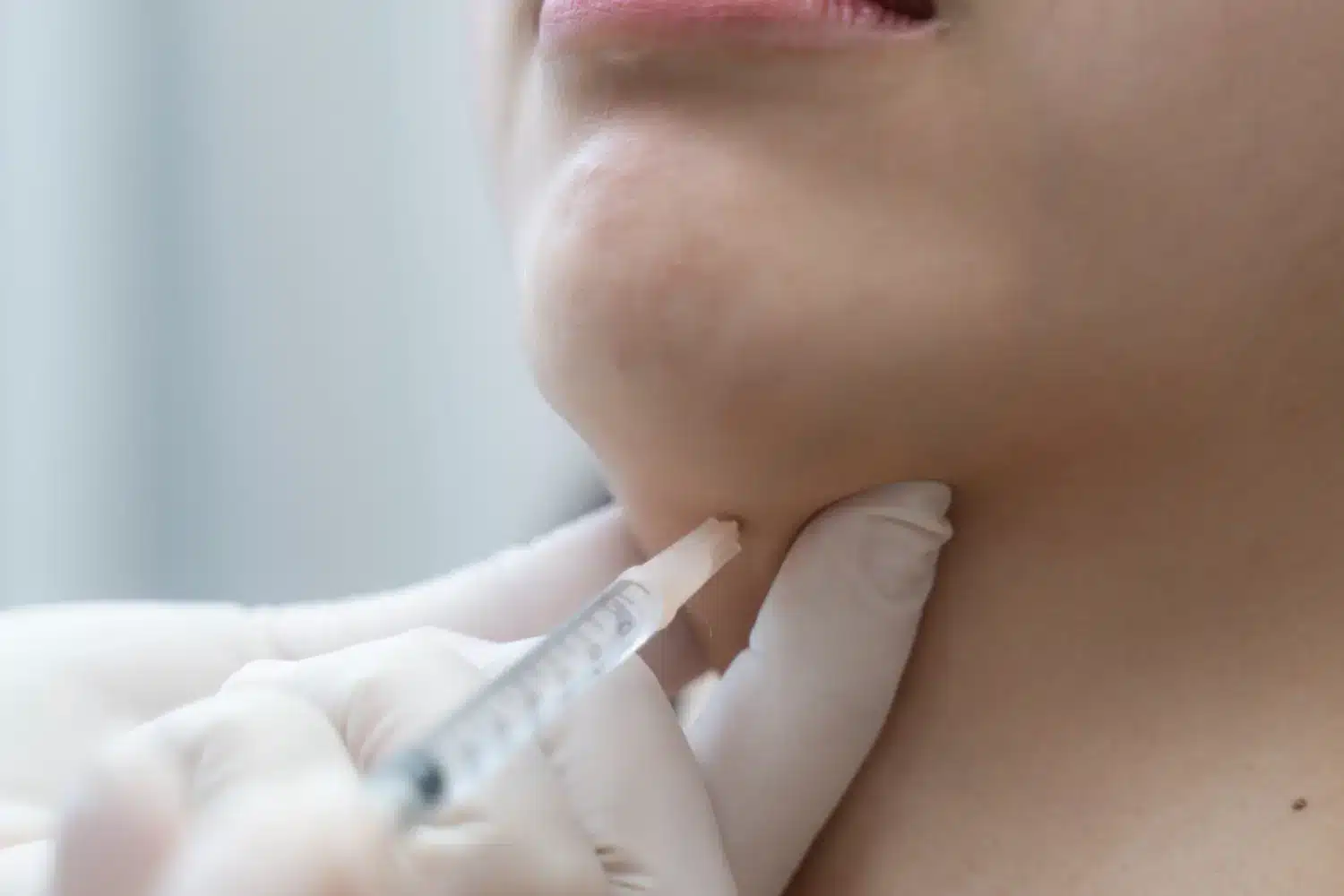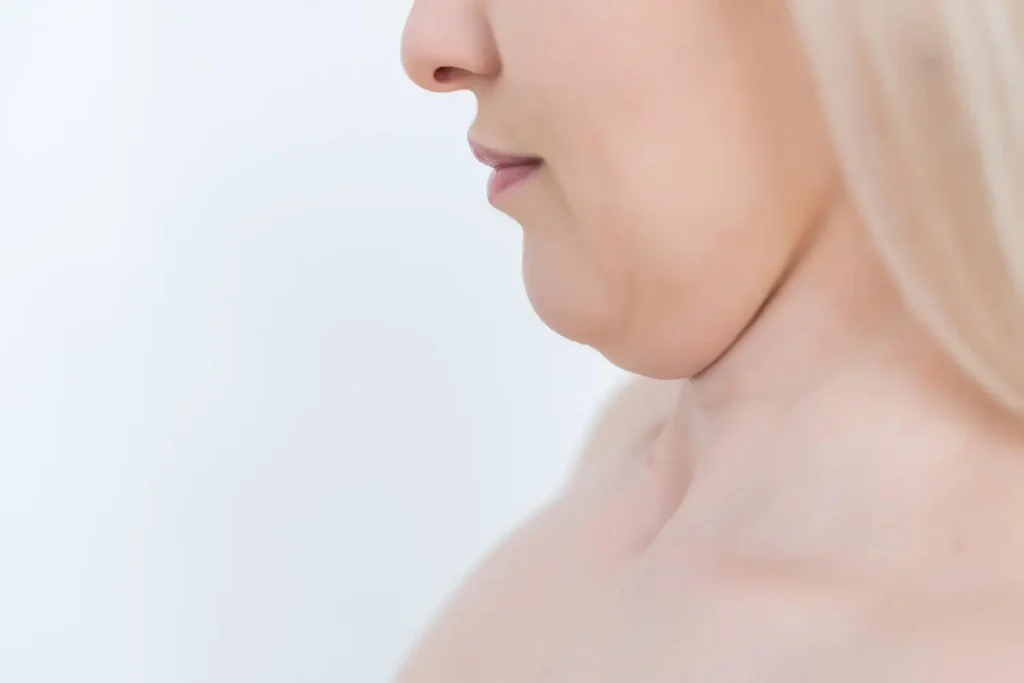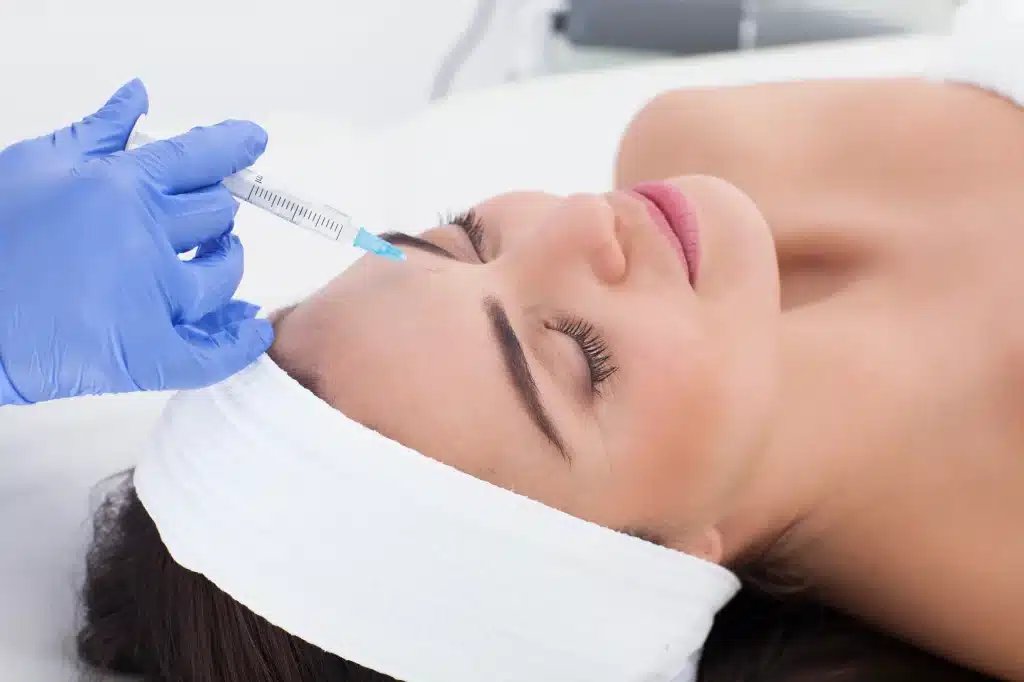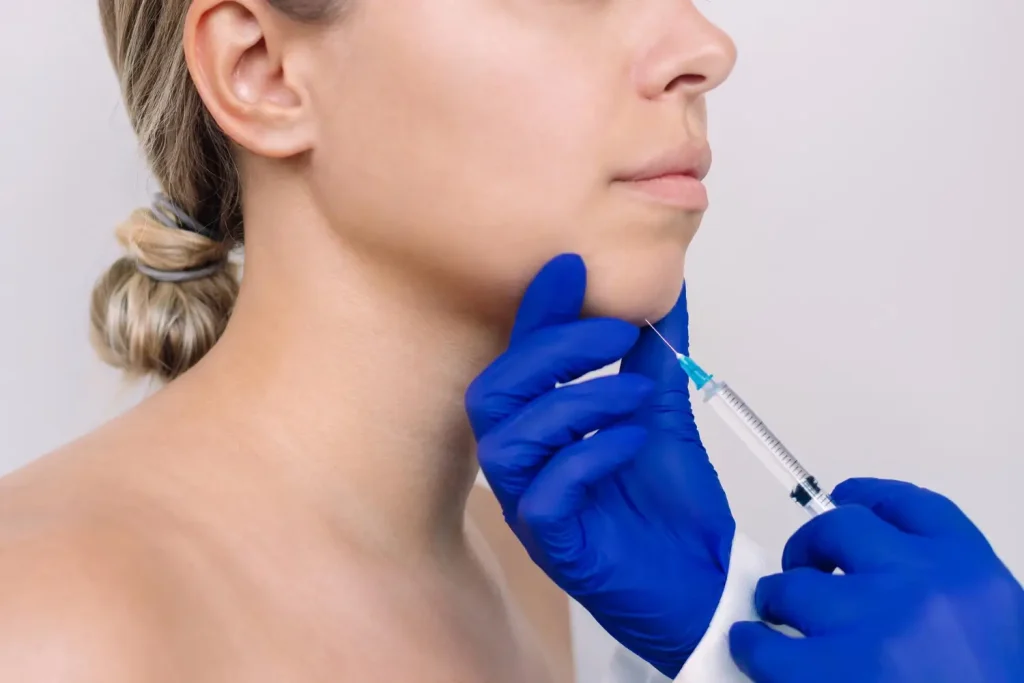Submental fat, commonly known as a double chin, is a widespread aesthetic concern that affects individuals of various ages and body types. It often develops due to genetics, aging, or weight fluctuations, and is typically resistant to conventional approaches such as diet and exercise. As a result, it can significantly impact facial aesthetics and self-esteem.
For individuals seeking a non-surgical solution, Belkyra (also known as deoxycholic acid) provides an innovative, injectable treatment. This FDA-approved procedure is designed to permanently reduce submental fat by targeting and destroying fat cells beneath the chin. With a series of treatments, Belkyra can help redefine the jawline, offering a more contoured profile with minimal downtime and long-lasting results.
This article will examine Belkyra’s benefits, its mechanism of action, and what patients can expect in terms of treatment sessions, effectiveness, and potential side effects.
Key Takeaways
- Belkyra is an FDA-approved injectable treatment that targets submental fat using deoxycholic acid, a compound that breaks down and eliminates fat cells.
- The treatment works through adipocyte lysis, leading to gradual fat cell destruction and natural elimination via the lymphatic system, resulting in a more sculpted jawline.
- Ideal injection sites include the area beneath the chin, mapped precisely using a grid pattern to ensure even distribution and minimize side effects.
- Proper injection depth (1–2 mm under the skin) and dosage (typically 1–2 mL per session) are critical to maximizing safety and effectiveness.
- Pre-treatment assessments ensure candidates are well-informed and suitable for the procedure, while post-care protocols such as applying cold compresses and avoiding irritation help support healing.
- Most patients require multiple sessions, spaced several weeks apart, with noticeable improvements seen gradually over time.
- Before and after results show significant improvements in chin contour and facial definition without the need for surgery.
- When administered correctly and accompanied by proper patient education, Belkyra offers a safe, non-invasive solution for reducing double chin fat and enhancing facial aesthetics.
About: Medical Spa RX provides medical practices with premium products at the best prices. If you’re looking to buy Belkyra (Kybella) online for your practice, the sales representatives at Medical Spa RX can give you guidance.
Mechanism of Action: Adipocyte Lysis and Fat Reduction
Belkyra (deoxycholic acid) works by destroying fat cells in the submental region through a process known as adipocyte lysis. Deoxycholic acid is a naturally occurring bile acid that helps break down dietary fat. When injected into the area under the chin, it disrupts the membrane of fat cells, leading to cell death.

Over time, the body metabolizes and eliminates these destroyed fat cells through the lymphatic system. As fat is removed, the appearance of a double chin diminishes, and the jawline becomes more defined. Because the treatment targets fat cells specifically, surrounding tissues remain unaffected, making Belkyra a safe and non-invasive option for reducing stubborn chin fat.
Anatomical Considerations and Injection Site Mapping
For successful Belkyra treatment, precise anatomical assessment and injection site mapping are essential. Key clinical considerations include:
- Assessment of the Submental Area: Evaluate the volume and distribution of fat to determine candidacy.
- Accurate Mapping: Use a grid pattern to guide consistent and even injection distribution.
- Anatomical Landmarks: Identify features like the mental prominence and jaw angle to guide injections.
- Variation in Skin and Fat: Consider differences in skin thickness, fat depth, and symmetry to avoid irregularities.
- Balanced Application: Careful technique ensures uniform fat reduction and prevents over-treatment.
A skilled approach to mapping not only enhances treatment safety but also leads to more natural, symmetrical contouring.
Optimal Injection Techniques, Depth, and Dosage
Belkyra is injected using a grid-like pattern, usually with each injection spaced about 1 cm apart and placed 1–2 mm beneath the skin to effectively reach the subcutaneous fat layer. Proper technique is crucial: injections that are too shallow may cause skin irritation, while deeper injections risk affecting underlying structures.

Typical sessions involve 1–2 mL of Belkyra, depending on the amount of submental fat. Multiple sessions—generally spaced 4–6 weeks apart—may be required to achieve desired results. Belkyra before and after images from clinical cases demonstrate the progressive reduction in fullness and the enhanced definition of the chin and jawline.
Pre-Treatment Assessment and Patient Education
Thorough assessment and patient education are key to a safe and successful outcome. Steps include:
- Medical History Review: Rule out contraindications and assess overall health.
- Fat Evaluation: Examine the chin area to confirm the presence of submental fat and rule out skin laxity.
- Expectation Setting: Discuss the gradual nature of results, the possible need for multiple sessions, and likely outcomes.
- Side Effect Education: Explain common side effects such as swelling, numbness, or bruising, and review post-care protocols.
- Aftercare Planning: Provide clear, written instructions to promote recovery and minimize complications.
This transparent approach helps build trust and compliance, ensuring that patients are well-prepared and confident in their decision.
Post-Treatment Care and Complication Management
Recovery after Belkyra is generally smooth but depends on proper aftercare. Key recommendations include:
- Cold Compress: Apply intermittently for the first 24–48 hours to reduce swelling and bruising.
- Avoid Rubbing: Do not massage or press on the treated area to avoid irritation.
- Over-the-Counter Pain Relief: Mild discomfort can be managed with ibuprofen or acetaminophen.
- Watch for Complications: Though rare, issues like nerve injury, infection, or persistent lumps should prompt immediate medical attention.
- Follow-Up Appointments: Help assess progress and determine whether additional sessions are needed.
Most patients recover within one to two weeks, with visible results developing over a few months as fat is eliminated.
Conclusion
Belkyra offers a non-surgical, clinically proven way to treat submental fullness, enhancing jawline definition and boosting self-confidence. By leveraging deoxycholic acid, it permanently destroys fat cells, providing long-lasting results with minimal downtime.
When delivered with careful assessment, technique, and post-treatment care, Belkyra is a safe and effective option for contouring the lower face.
FAQs
1. How many treatments will I need?
Most patients require 2-4 treatment sessions spaced about a month apart. However, the number of treatments can vary depending on the amount of submental fat.
2. Are the results permanent?
Yes, once the treatment destroys the fat cells, they do not regenerate. However, maintaining a healthy weight is essential to preserve the results.
3. How soon will I see results?
Results typically begin to appear within 4-6 weeks after the final treatment, with full results visible after a few months.
4. Can Belkyra treat other areas of the body?
Currently, Belkyra only has approval for treating the submental area (under the chin). Experts do not recommend its use in other areas of the body.
5. What are the common side effects of Belkyra?
Common side effects include swelling, bruising, pain, redness, and hardness at the injection site. These typically resolve within a few days to weeks.
6. Who should not use Belkyra?
Belkyra is contraindicated for individuals with infections in the treatment area, pregnant or breastfeeding women, and those with certain medical conditions such as uncontrolled diabetes or allergies to deoxycholic acid.
7. Does Belkyra require downtime?
While there is minimal downtime, swelling resembling a “bullfrog-like” appearance may last for up to 7–10 days after treatment.
8. How does Belkyra work?
Belkyra contains deoxycholic acid, which breaks down fat cells in the submental area. The body’s natural metabolic pathways then process and eliminate these destroyed cells.
References
Baumann L, Shridharani SM, Humphrey S, Gallagher CJ. Personal (Self) perceptions of submental fat among adults in the United States. Dermatologic Surgery. 2018;45(1):124-130. doi:10.1097/dss.0000000000001648
Shamban AT. Noninvasive submental fat compartment treatment. Plastic & Reconstructive Surgery Global Open. 2016;4(12S):e1155. doi:10.1097/gox.0000000000001155
Beer K. Treating submental fat. HMP Global Learning Network. Published online June 14, 2016. https://www.hmpgloballearningnetwork.com/site/thederm/site/cathlab/event/treating-submental-fat



















